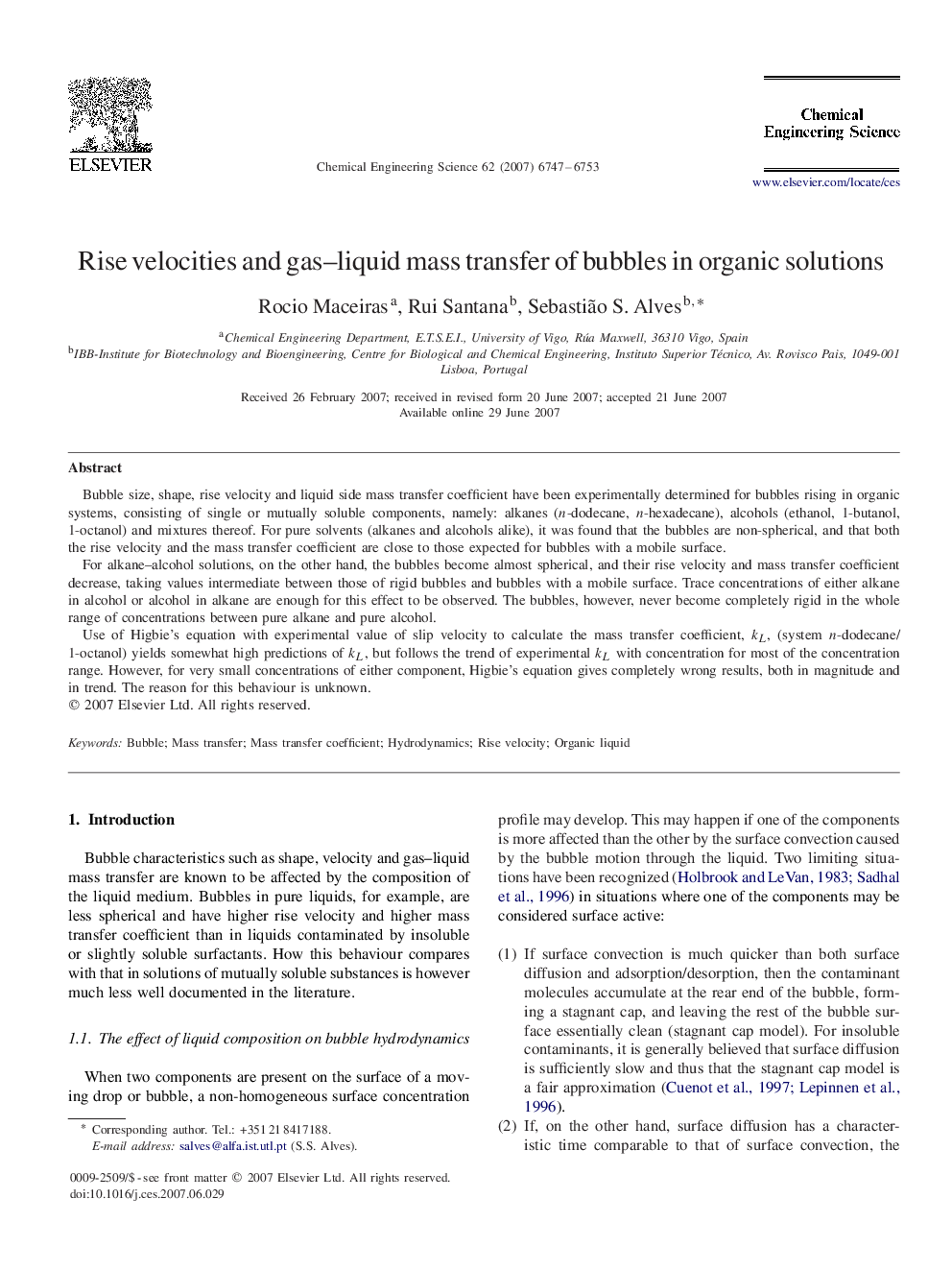| کد مقاله | کد نشریه | سال انتشار | مقاله انگلیسی | نسخه تمام متن |
|---|---|---|---|---|
| 158360 | 457005 | 2007 | 7 صفحه PDF | دانلود رایگان |

Bubble size, shape, rise velocity and liquid side mass transfer coefficient have been experimentally determined for bubbles rising in organic systems, consisting of single or mutually soluble components, namely: alkanes (nn-dodecane, nn-hexadecane), alcohols (ethanol, 1-butanol, 1-octanol) and mixtures thereof. For pure solvents (alkanes and alcohols alike), it was found that the bubbles are non-spherical, and that both the rise velocity and the mass transfer coefficient are close to those expected for bubbles with a mobile surface.For alkane–alcohol solutions, on the other hand, the bubbles become almost spherical, and their rise velocity and mass transfer coefficient decrease, taking values intermediate between those of rigid bubbles and bubbles with a mobile surface. Trace concentrations of either alkane in alcohol or alcohol in alkane are enough for this effect to be observed. The bubbles, however, never become completely rigid in the whole range of concentrations between pure alkane and pure alcohol.Use of Higbie's equation with experimental value of slip velocity to calculate the mass transfer coefficient, kLkL, (system nn-dodecane/1-octanol) yields somewhat high predictions of kLkL, but follows the trend of experimental kLkL with concentration for most of the concentration range. However, for very small concentrations of either component, Higbie's equation gives completely wrong results, both in magnitude and in trend. The reason for this behaviour is unknown.
Journal: Chemical Engineering Science - Volume 62, Issue 23, December 2007, Pages 6747–6753